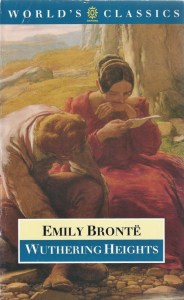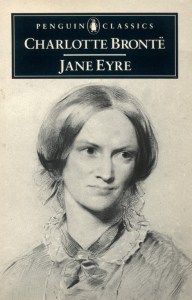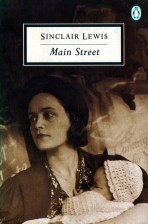 The House of the Seven Gables by Nathaniel Hawthorne ~ 1851. This edition: Aerie Books, 1988. Foreword and Afterword by Andre Norton. Paperback. ISBN: unknown. 330 pages.
The House of the Seven Gables by Nathaniel Hawthorne ~ 1851. This edition: Aerie Books, 1988. Foreword and Afterword by Andre Norton. Paperback. ISBN: unknown. 330 pages.
My rating: 6/10
It is midway through the 1800s, and some two centuries after the notorious Salem witch trials, the venerable New England town has settled down into sedate respectability. Its weathered old buildings slumber in the summer sun, shudder in the winter storms, and bear silent witness to the relentless march of time and of an eclectic array of local characters, whose passage through the life of the town is memorialized in local legend.
The now-mouldering House of the Seven Gables is one of the most legend-ridden of the town’s many antique structures. Built on a piece of ground once owned by a reputed “wizard” who was executed during the 1600s’ purges amidst whispered rumours of a personal vendetta and frame-up by a wealthy townsman, the building and its inhabitants are associated with a violent curse pronounced upon the accuser and his future family. Here’s Hawthorne:
Old Matthew Maule, in a word, was executed for the crime of witchcraft. He was one of the martyrs to that terrible delusion, which should teach us, among its other morals, that the influential classes, and those who take upon themselves to be leaders of the people, are fully liable to all the passionate error that has ever characterized the maddest mob. Clergymen, judges, statesmen,—the wisest, calmest, holiest persons of their day stood in the inner circle round about the gallows, loudest to applaud the work of blood, latest to confess themselves miserably deceived. If any one part of their proceedings can be said to deserve less blame than another, it was the singular indiscrimination with which they persecuted, not merely the poor and aged, as in former judicial massacres, but people of all ranks; their own equals, brethren, and wives. Amid the disorder of such various ruin, it is not strange that a man of inconsiderable note, like Maule, should have trodden the martyr’s path to the hill of execution almost unremarked in the throng of his fellow sufferers. But, in after days, when the frenzy of that hideous epoch had subsided, it was remembered how loudly Colonel Pyncheon had joined in the general cry, to purge the land from witchcraft; nor did it fail to be whispered, that there was an invidious acrimony in the zeal with which he had sought the condemnation of Matthew Maule. It was well known that the victim had recognized the bitterness of personal enmity in his persecutor’s conduct towards him, and that he declared himself hunted to death for his spoil. At the moment of execution—with the halter about his neck, and while Colonel Pyncheon sat on horseback, grimly gazing at the scene Maule had addressed him from the scaffold, and uttered a prophecy, of which history, as well as fireside tradition, has preserved the very words. “God,” said the dying man, pointing his finger, with a ghastly look, at the undismayed countenance of his enemy,—”God will give him blood to drink!” After the reputed wizard’s death, his humble homestead had fallen an easy spoil into Colonel Pyncheon’s grasp. When it was understood, however, that the Colonel intended to erect a family mansion-spacious, ponderously framed of oaken timber, and calculated to endure for many generations of his posterity over the spot first covered by the log-built hut of Matthew Maule, there was much shaking of the head among the village gossips. Without absolutely expressing a doubt whether the stalwart Puritan had acted as a man of conscience and integrity throughout the proceedings which have been sketched, they, nevertheless, hinted that he was about to build his house over an unquiet grave. His home would include the home of the dead and buried wizard, and would thus afford the ghost of the latter a kind of privilege to haunt its new apartments, and the chambers into which future bridegrooms were to lead their brides, and where children of the Pyncheon blood were to be born. The terror and ugliness of Maule’s crime, and the wretchedness of his punishment, would darken the freshly plastered walls, and infect them early with the scent of an old and melancholy house.
A bit wordy, do you think? Oh, yes, very much so. This book requires more than a little perseverance to get through, and a very high tolerance for wading through lushly ornate passages such as that reproduced above.
One is rewarded for the attempt by gems of genuine humour and authorial playfulness among all the ponderous pronouncements. Though his writing is dauntingly dense reading, I found myself won over by Hawthorne’s paradoxical charm, in particular his habit of stating the obvious over and over again, driving home his points not by mighty sledgehammer blows, but by a persistent and relentless tap-tap-tapping.
Backing up a bit, to the plot of the story. The wizard is dead, the accursed murderer is about to build the titular house upon the tainted plot of land. And who should Colonel Pyncheon choose as head architect and carpenter but the son of the murdered man! Young Thomas Maule fulfills his commission with admirable expertise, and is luckily not seen lurking about the day of the grand house-warming, which goes horribly awry upon the discovery of the Colonel dead in his sitting room of an apparent hemorrhage, mouth horribly full of blood, chest covered in gore.
“The curse! The curse!” is whispered all about, and a coroner’s jury comes up with the unarguably accurate (though not very enlightening) verdict of “Sudden Death”.
The scene is now set for generations of rising and falling Pyncheon fortunes, as the Colonel’s descendants variously flourish and decline, with occasional inexplicable tragedies occurring, bring back whispers of “The curse!”
The House of the Seven Gables is now occupied by one of the few remaining Pyncheon descendants. Elderly spinster Miss Hepzibah resides alone in the massive and musty old mansion but for a boarder residing in a remote gable, a young man engaged in the profession of daguerreotype photography.
The two enjoy a cordial though far from intimate relationship, and live their lives remote from each other, though young Mr. Holgrave appears to view his landlady with a certain humorous benevolence. He appears this morning of the opening passages of the story to wish her luck upon her present endeavour, that of opening up a room of the house as a “cent shop”, a sort of notions-and-snacks corner store locally common to those women needing to earn a few pennies by their personal labours of baking, knitting, sewing and minor retailing of odds and ends – needles, yarn, tea and coffee, small packets of sugar, flour and yeast and the like for housewives caught short.
What a comedown in the world for poor Miss Hepzibah! Gently raised, a New England “lady”, Miss H has run out of financial resources right when she needs money the most, for her younger brother Clifford suddenly has need of her shelter and assistance.
For Clifford was convicted of murder some thirty years earlier, when the uncle then in charge of the House of Seven Gables was found dead, mouth full of blood, chest covered in gore (hey! does this remind you of anything?) but this time with a damning bloody handprint found at the scene, ostensibly that of young Clifford’s. Clifford has steadfastly maintained his innocence, and apparently there were some doubts as to his complete guilt, because he has quietly been released from jail, to flee to his sister’s sheltering arms, an almost-insane, weeping, cringing wreck of a man.
Add to this ménage a young relation fresh from the country, lovely Phoebe, who is deeply good and conveniently competent and proves a godsend to Hepzibah as she struggles with the dual challenges of shop-keeping and brother-sitting.
And, entering from Stage Left, a villainous uncle, the continuously smiling but deeply evil Judge Pyncheon, spitting image of long-dead ancestor Colonel Pyncheon, complete to grasping nature and apparent lack of conscience.
There follows a not very plausible drama concerning a long-hidden secret document, complicated by the continual efforts of the wicked Judge to confront the mentally fragile Clifford regarding the circumstances of the thirty-years-ago murder.
Phoebe adds a sweetly winsome element to the soberness of the story by her innocent charm and her artless forays into gardening and chicken-keeping in the overgrown gardens surrounding the house, and rather predictably becomes involved in a romance with the handsome daguerreotypist boarder Mr Holgrave, who turns out to be not quite what he seems.
A main character dies in identical circumstances to the demise of the first cursed Pyncheon, and the townspeople gather to gossip and cast blame (“The curse! The curse!”) until all is unravelled, with various truths revealed. The bones of the wizard may now rest easy in the grave. Goodness is rewarded, and the innocent are vindicated, while the evil are indicted of their heinous crimes.
All’s well that ends well, and we close the book with vast relief at having made our laborious way through. Tick it off the list, and move on, meanwhile pitying those poor students who must read, re-read and analyze this dense period piece of a gothic novel in the interests of garnering marks for their literature classes.
Is this really a classic, or merely an example of vintage genre fiction? After this reading I incline to the second designation, for despite its inclusion on numberless literary reading lists, the book is really quite a minor novel, a fluff piece despite its wordy immensity. Its main theme – if there must be one – seems to me to be all about ancestral guilt, but the occasional supernatural occurrences used to move the story along muddy the waters enough to defy its being classified as any one thing. It’s a combination of mild horror story, clichéd romance novel, chest-thumping melodrama, and ironic morality tale.
This said, here and there the author strikes pure gold, with memorable incidents and passages of prose, and to add to its appealing aspects there is abundant humour amongst all of the curses, hand-wringings, bloodshed and drama.
In conclusion I must say that I generally enjoyed the novel, and am glad I read it. I will not however recommend it as a must-read, because it is truly a ponderous hodge-podge of a book, more gobbledy-gook than substance when one views it from a little distance after finally attaining its end.
Here’s an excellent essay by Jason Pettus on the Chicago Center for Literature and Photography website, detailing Jason’s opinion regarding The House of the Seven Gables’ inclusion on classics lists, and its historical literary significance.

The house which inspired Nathaniel Hawthorne’s gothic romance, the Turner-Ingersoll mansion in Salem, built in 1668, and now restored as part of a collection of historic buildings associated with Hawthorne in his home city. Photo taken in the early 1900s.
Read Full Post »
 Wuthering Heights by Emily Brontë ~ 1847. This edition: Oxford University Press, 1981. Edited and with Introduction by Ian Jack. Paperback. ISBN: 0-19-281543-1. 370 pages.
Wuthering Heights by Emily Brontë ~ 1847. This edition: Oxford University Press, 1981. Edited and with Introduction by Ian Jack. Paperback. ISBN: 0-19-281543-1. 370 pages.



















